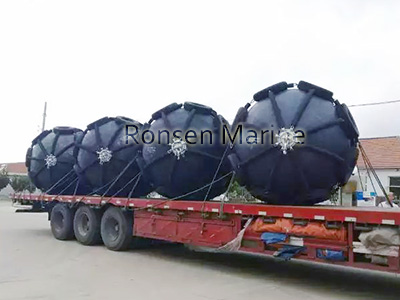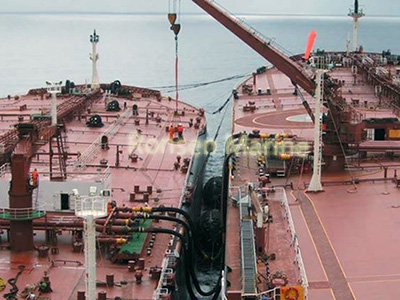
Fenders are an essential marine equipment in STS transfer operations offshore. They are divided into two categories: Primary fenders and Secondary fenders.
Primary Fenders:
They are positioned along the parallel body of the ship to afford the maximum possible protection while alongside. Primary fenders may be foam filled fenders or pneumatic rubber fenders (0.5/0.8 kg/cm2) and all should be manufactured, tested in accordance with industry and international standards. Now, ISO 17357-1:2014 specifies the material, performance, inspection procedure and dimensions of floating pneumatic rubber fenders intended to be used for the berthing and mooring of a ship to another ship or berthing structure. It is recommend that materials, verification and inspection for foam filled fenders are in accordance with an ASTM and ISO calibration system that meets ANSI/NCSL Z540 (ISO 10012-1).


Secondary Fenders:
Secondary fenders are used to protect bow and stern plating from inadvertent contact if the ships get out of alignment during mooring and unmooring. The points where such contact is likely to occur, which may be relatively high up due to the flare of a bow or a stern, should be identified in advance of the operation and the secondary fenders may not be adjacent to a bollard, fairlead or hoisting equipment. It is important that secondary fenders are properly secured andn it may be necessary to move the secondary fenders prior to unmooring if the likely points of contact have changed due to changes in the freeboards of the two ships. Secondary fenders may also be either air or foam filled types. It can, however, be advantageous for secondary fenders to be light in weight because, as stated above, they must often be hauled well above the waterline and located in positions with limited access to lifting gear or support points. It may help if fenders can be moved quickly to counter possible inadvertent contact.
Except in cases where the STS transfer is carried out using a dedicated lightering ship, it is most probable that fendering operations will be carried out with the assistance of an STS service provider. Such companies usually have service craft available and these vessels will normally assist in positioning fenders on the relevant ship.
Fenders may be secured in place on either ship. However, landing on an unprotected hull section is less likely if the fenders are rigged on the manoeuvring ship, and it is therefore preferable that fenders be secured to that ship. It should be noted that where fenders are to be rigged on the manoeuvring ship there may be more stresses on the head fender wire, and that the fender wire utilizes one head wire per winch. In addition, bering generally the smaller ship, a less effective lee for rigging is maintained.
The person in overall advisory control should advise the position and method of securing the fenders to the ships in advance of the operation.
When fenders are fitted to the manoeuvring ship, primary fenders should be positioned one at each end of the parallel body, with similar additional units fitted in between (See Figure 1). The fender string may be made up to a prearranged length. Alternatively in some operations where four fenders are used, it has been found beneficial to position them in two groups of two (See Figure 2). In this way, and with each group positioned well forward or well aft on the parallel body, better protection can be provided. Secondary fenders may be positioned fore and aft of the parallel body. Fender moorings should be monitored frequently and tended as necessary to ensure that they do not become too slack or too taut and that the fenders remain in position.
The length of the fender string should be such that the fenders will be able to distribute the maximum anticipated impact load within the parallel body of both ships.